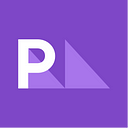Why do You Need a Kanban Board?
As I mentioned in the Free Kanban Board Software post, Kanban (看板) is a Japanese and also a Chinese word that means signboard or billboard. It is a scheduling system for lean and just-in-time manufacturing. Taiichi Ohno, an industrial engineer at Toyota, developed Kanban to improve his manufacturing efficiency.
Kanban goal
The Kanban goal is to help you and your team make sure each part of the product/project is going to be built and prioritized with the same level of care at every step. The board is a way to organize and prioritize your flow/queue with transparency and accountability. It focuses on status instead of due dates. Each task moves through different stages, for example, it can move from the stage TO DO, to DOING and in the end it moves to DONE.
Kanban focuses on status instead of due dates.
Having a Kanban board allows the team to track what is in progress easily and they can also check the next backlog item or if they have any impediments/blockers — which is anything that is slowing down the team. The way the board is organized and the backlog is prioritized, it helps the team make sure the increment is going to be finished exactly when it’s most needed. So, what comes first, is delivered first!
How Kanban works
1 — Make It Visible!
What’s the best way to increase transparency and accountability? Make it visible! By creating a visual model of the team’s workflow, you will make sure everybody is on the same page, since everybody on the team (and also stakeholders) can observe the flow moving through the Kanban board.
The team can also visualize the queue, blockers/impediments and in some cases, the burndown chart. It can help your team increase transparency, collaboration and also communication.
2 — Work in Progress Limits
WIP (work in progress) limit is a strategy for preventing bottlenecks in software development. Work in progress limits is agreed upon by the development team before a project begins and are enforced by the team’s facilitator.
When you have too many tasks in a list at one time, it’s difficult to see which one is the priority and which one you can leave until later. In a research conducted at Stanford University not that surprisedly found that multitasking is less productive than doing a single thing at a time.
Multitasking is less productive than doing a single thing at a time.
You can reduce the time it takes an item to travel through the Kanban system (DO, DOING and DONE columns) by limiting how much-unfinished work is in process. You can also avoid problems caused by task switching and reduce the need to reprioritize items all the time.
3 — Focus
Since you and your team are focused on one task/iteration at a time, the iteration is going to be finished exactly when it’s most needed. Having WIP — work in progress limits helps the Kanban system to have a smooth flow where the team collaborates together to be more effective, and improve the work during the Sprint cycle.
4 — Inspection
We’re not perfect, right? Actually, we’re far away from being perfect. We’re humans and this is absolutely fine. Along the product development cycle, we’re going to make mistakes and this is inevitable.
Why not fail fast when we do fail since each failure is also an opportunity to learn?
5 — Failing
For continuous improvement, we will need to constantly inspect. Let’s track our flow, our velocity, and also our quality. Don’t be afraid to experiment and fail, actually, let’s fail and validate our learnings! Since we learn when we fail, why not fail fast when we do fail since each failure is also an opportunity to learn?
How do I start?
If you choose a physical Kanban board or software, you’ll need to keep in mind that Kanban has four elements: the board, the backlog, the queue limit, and the cards:
- Board: The living environment where you’re going to add your backlog list, prioritize it and make it visible.
- Backlog: A list of features or tasks that need to be dealt with. Basically, it’s a list of work you and your team are going to do.
- Cards: It has the information about the backlog, such as a feature or task to be completed, and who’s is going to work on that.
- Queue limit: It’s the limit of your team. You need to know the maximum capacity of work they can handle.
Physical Kanban Boards
The first thing you’ll need is Sticky Notes. I like to use two different colors and soon I’m going to explain why. The second thing you’ll need to have is your backlog list, of course! Third, you will need the person/people in the team who are responsible for each deliverable.
- A board or a wall
- Sticky Notes
- Sharpie or whatever pen you like
- Backlog list
- Person/People responsible for each deliverable
Electronic Kanban Boards
First, decide the software you’re going to use. There are a bunch of options in the market right now, some of them are free. The second thing you’ll need to have: your backlog list, of course! Third, the person/people in the team responsible for each deliverable.
- Kanban software
- Backlog list
- Person/People responsible for each deliverable
I did a review of some free Kanban board software. You can take a look and decide which is is the best option for your team.
Why do you need a Kanban Board?
- Increase transparency;
- Queue limiter;
- Accountability;
- Collaboration;
- Visual way to see your queue;
- Avoid overloading of the system;
- Establish an upper limit to the work in progress flow.
Kanban Board Software I Recommend
Additional Resources
👋 Feel Free to Clap and Share your Thoughts!
Find more at our LinkedIn, Instagram, and Twitter. Check our podcast. Follow our LinkedIn page and Newsletter!
Disclosure: At PM101, we strive to provide our readers with valuable and honest information on Product and Program Management. As a way to support the blog and continue providing valuable content, some blog posts may contain affiliate links or promotional content. By clicking on these links and making a purchase, the writer may receive a small commission at no additional cost to you. This commission helps to keep the blog running and allows the writer to continue providing valuable content and increasing her coffee and kombucha consumption. Rest assured, we will always provide honest and informative content and use affiliate links and promotional content only as a means to generate revenue to support the blog.

